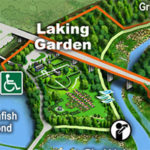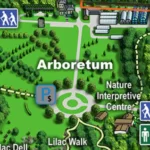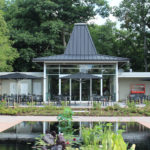| Membership | Price (+HST) |
|---|---|
| Single | $85/year |
| Single Plus | $120/year |
| Family | $130/year |
| Family Plus | $175/year |
| Contributing | $300/year |
| Supporting | $600/year |
| Sustaining | $1,000/year |
| Benefactor's Circle | $2,500/year |
| Director's Circle | $5,000/year |
| President's Circle | $10,000/year |
Cootes Paradise Marsh: Big Steps Towards Recovery
By Tys Theysmeyer, Head of Natural Areas, Royal Botanical Gardens
This spring aquatic plants have undergone large scale regeneration and are widespread across the marsh. In the annual back-and-forth process of advancing recovery of Cootes Paradise Marsh back to a healthy ecosystem it’s turning into an extraordinary year and step forward. The simple summary is that it is currently in its best condition in my lifetime, although that might be referred to as 1/3 of the way back to being healthy, with some of the inlets quite spectacular. This happy circumstance is tied to three things, having handle on the Eurasian Common Carp population, a stable clean spring growing season, and above average lake levels.
The health and recovery of the marsh ultimately lives and dies based on the quality of water that flows in from the many surrounding communities of Hamilton. Water this past spring went through extremes, with March having heavy rain, creating both a reload of the landscape with fresh water and of course causing multiple large scale sewer overflows and very poor water quality. However, by mid-April these rain events all but stopped leaving us with large amounts of clean water upstream to then flow through and flush the dirty water out to Hamilton Harbour. This much cleaner water period timed out with the spring plant growing season. The aquatic plants have undergone large scale regeneration in this cleaner water and are widespread although algae continues to be dominant.


It’s nice to see things coming together to progress habitat recovery and providing inspiration to carry us forward through the hard work yet to come. The additional bonus of the stable and high spring water levels is that there are now huge numbers of young fish. The giveaway of the presence of all these fish will be an abundance of fish-eating birds this summer including terns, herons, and cormorants feasting on the riches. At the same time the aquatic plants that have grown will provide shelter to most of the fish and so many millions will grow up and find their way to Lake Ontario come fall.
There are only two locations that are distinctly struggling with simply growing plants at all. These two areas are waters at Chedoke Creek area by Princess Pt, and the western area of the marsh downstream of the Dundas Wastewater Plant. For the sewage overflow issues, currently in the background many projects are underway with road closures and excavated streets in west Hamilton. These projects will reduce overflow frequency and amounts and mean that even better water is ahead for 2024.
Additional Resources
More from the RBG Blog
Check out RBG’s blog for announcements, articles, and more from Canada’s largest botanical garden.
Want to be sure you hear first? Sign up for our weekly e-newsletter to hear about upcoming events, weekend activities, articles, and more!












